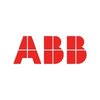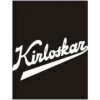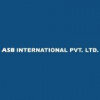Filter interviews by
Clear (1)
Macawber Beekay Mechanical Engineer Interview Questions, Process, and Tips
Macawber Beekay Mechanical Engineer Interview Experiences
1 interview found
(5 Questions)
- Q1. Which type of bearing used to axial load?
- Ans.
Thrust bearings are used to axial load in mechanical applications.
Thrust bearings are designed to handle axial loads
They are commonly used in applications where the load is primarily in the axial direction
Examples include ball thrust bearings and roller thrust bearings
- Q2. Why is used to gear box?
- Ans.
Gear boxes are used to control the speed and torque of a mechanical system by changing the gear ratio.
Gear boxes allow for the transmission of power from one component to another at different speeds and torques.
They are used to increase or decrease the speed of rotation depending on the application requirements.
Gear boxes also provide mechanical advantage by increasing the torque output while reducing the speed of rota...
- Q3. Which types of pump used by slurry disposal ?
- Ans.
Centrifugal pumps and positive displacement pumps are commonly used for slurry disposal.
Centrifugal pumps are often used for transporting large volumes of slurry with low viscosity.
Positive displacement pumps are suitable for handling high viscosity slurry or slurry with solid particles.
Examples of pumps used for slurry disposal include centrifugal slurry pumps and progressive cavity pumps.
- Q4. Types of alignments?
- Ans.
Types of alignments include shaft alignment, coupling alignment, and belt alignment.
Shaft alignment ensures that the shafts of rotating equipment are properly aligned to prevent vibration and wear.
Coupling alignment involves aligning the coupling components to ensure smooth power transmission.
Belt alignment ensures that belts are properly aligned on pulleys to prevent slippage and wear.
Other types of alignments may inc...
- Q5. Difference between conving pressure and instrument pressure.
- Ans.
Converting pressure is the process of converting pressure units, while instrument pressure is the pressure measured by an instrument.
Converting pressure involves changing the units of pressure, such as from psi to bar or Pa to atm.
Instrument pressure is the actual pressure measured by a pressure gauge or sensor.
Converting pressure is a mathematical calculation, while instrument pressure is a physical measurement.
For ex...
Interview Preparation Tips
Top trending discussions






Interview questions from similar companies

I applied via Referral and was interviewed before Apr 2021. There was 1 interview round.
(1 Question)
- Q1. Maintenance phylosophy
- Ans. Depends on equipment running hour, criticality, availability and standby.
Interview Preparation Tips
- Boe
- Energy manager

I applied via Company Website and was interviewed before Jul 2021. There were 3 interview rounds.

(2 Questions)
- Q1. Power plant related Questions
- Q2. Steam turbine and AFBC and CFBC Boiler
(1 Question)
- Q1. General Questions for personal not technically
Interview Preparation Tips

I applied via Walk-in and was interviewed before May 2022. There were 2 interview rounds.

(2 Questions)
- Q1. Tell me about yourself ?
- Q2. About your work experience?
Interview Preparation Tips

Interview Questionnaire
6 Questions
- Q1. Drum level transmitter
- Q2. Boiler interlocking
- Q3. Vibration sensors
- Q4. Turbine parameters and interlocking
- Q5. DCS tag assigning process
- Ans.
DCS tag assigning process involves assigning unique names to process variables for monitoring and control.
DCS tag assigning process is crucial for efficient process control and monitoring.
Each tag represents a process variable and is assigned a unique name for easy identification.
Tags can be assigned manually or automatically based on the process requirements.
Tag naming conventions should be consistent and follow indus...
- Q6. Smart positioners like Simens Sipart 02
Interview Preparation Tips
Skills evaluated in this interview

I applied via Company Website and was interviewed in May 2023. There were 2 interview rounds.

(6 Questions)
- Q1. Which are the equipment used in steam turbine? And their principal and working and troubleshooting?
- Ans.
Equipment used in steam turbine include turbine blades, nozzles, casing, rotor, bearings, and governor.
Turbine blades: convert steam energy into mechanical energy
Nozzles: control the flow of steam into the turbine
Casing: contains and directs the steam flow through the turbine
Rotor: connected to the turbine blades and rotates to generate power
Bearings: support the rotor and reduce friction
Governor: regulates the speed o
- Q2. Tell us about the Woodward 505 ?
- Ans.
Woodward 505 is a versatile control system used in industrial applications.
The Woodward 505 is a widely used control system in industries such as power generation, oil and gas, and marine.
It offers advanced features like PID control, sequencing, and communication capabilities.
The Woodward 505 is known for its reliability and robustness in harsh operating environments.
It can be easily integrated with various types of se
- Q3. Explain the structure of the Honeywell DCS ?
- Ans.
The Honeywell DCS (Distributed Control System) is a modular system consisting of controllers, I/O modules, and operator stations.
Consists of controllers, I/O modules, and operator stations
Uses a network to communicate between components
Allows for centralized control and monitoring of processes
Supports various communication protocols such as Modbus, OPC, etc.
Example: Honeywell Experion PKS
- Q4. What is PID and How does it work ?
- Ans.
PID stands for Proportional-Integral-Derivative, a control loop feedback mechanism used in engineering.
PID is a control algorithm that calculates an error value as the difference between a desired setpoint and a measured process variable.
Proportional (P) control responds to the current error value.
Integral (I) control accumulates past errors to correct the present error.
Derivative (D) control predicts future errors bas...
- Q5. How to assign new chennal in Honeywell DCS ?
- Ans.
To assign a new channel in Honeywell DCS, you need to access the configuration software and follow the steps to add the channel.
Access the Honeywell DCS configuration software
Navigate to the channel configuration section
Add a new channel by specifying the channel number, type, and other relevant parameters
Save the changes and verify the new channel is successfully assigned
- Q6. Tell the interlock and permissive of boiler and turbine?
- Ans.
Interlocks and permissives are safety mechanisms in place to prevent unsafe operation of boiler and turbine systems.
Interlocks prevent certain actions from taking place unless specific conditions are met
Permissives allow certain actions to take place only if specific conditions are met
Example of interlock: Boiler feed pump interlock prevents the boiler from starting unless the feed pump is running
Example of permissive:...
Skills evaluated in this interview

Basic aptitude from rs agrawal book is sufficient
(1 Question)
- Q1. There were basic questions from SOM and mechanics

I applied via Naukri.com and was interviewed in Oct 2021. There were 4 interview rounds.
Interview Questionnaire
1 Question
- Q1. No question
Interview Preparation Tips

I applied via Referral and was interviewed in May 2023. There were 3 interview rounds.

GD &T and basic mechanical engineer
(2 Questions)
- Q1. Salary negotiation and basic background
- Q2. Last firm salary discussion
Interview Preparation Tips

Interview Questionnaire
1 Question
- Q1. Ash handling, boiler maintenance, refractory, sap, ptw.
Macawber Beekay Interview FAQs
Recently Viewed
Tell us how to improve this page.
Macawber Beekay Interviews By Designations
- Macawber Beekay Senior Engineer Mechanical Interview Questions
- Macawber Beekay Engineer Interview Questions
- Macawber Beekay Warehouse Incharge Interview Questions
- Macawber Beekay Store Keeper Interview Questions
- Macawber Beekay Mechanical Engineer Interview Questions
- Macawber Beekay Officer Interview Questions
- Macawber Beekay Programmer Analyst Interview Questions
- Macawber Beekay Engineer Trainee Interview Questions
- Show more
Interview Questions for Popular Designations
- Mechanical Maintenance Engineer Interview Questions
- Diploma Mechanical Engineer Interview Questions
- Mechanical Technician Interview Questions
- Senior Engineer Mechanical Interview Questions
- Mechanical Supervisor Interview Questions
- Junior Mechanical Engineer Interview Questions
- Mechanical Fitter Interview Questions
- Mechanical Maintenance Fitter Interview Questions
- Show more
Macawber Beekay Mechanical Engineer Interview Process
based on 2 interviews
Interview experience
Mechanical Engineer Interview Questions from Similar Companies
Fast track your campus placements
Macawber Beekay Mechanical Engineer Reviews and Ratings
based on 19 reviews
Rating in categories
|
Senior Engineer
75
salaries
| ₹0 L/yr - ₹0 L/yr |
|
Engineer
68
salaries
| ₹0 L/yr - ₹0 L/yr |
|
Assistant Manager
55
salaries
| ₹0 L/yr - ₹0 L/yr |
|
Mechanical Engineer
48
salaries
| ₹0 L/yr - ₹0 L/yr |
|
Safety Officer
32
salaries
| ₹0 L/yr - ₹0 L/yr |

Clyde Bergemann

FLSmidth

TKIL

TRF
- Home >
- Interviews >
- Macawber Beekay Interview Questions >
- Macawber Beekay Mechanical Engineer Interview Questions














